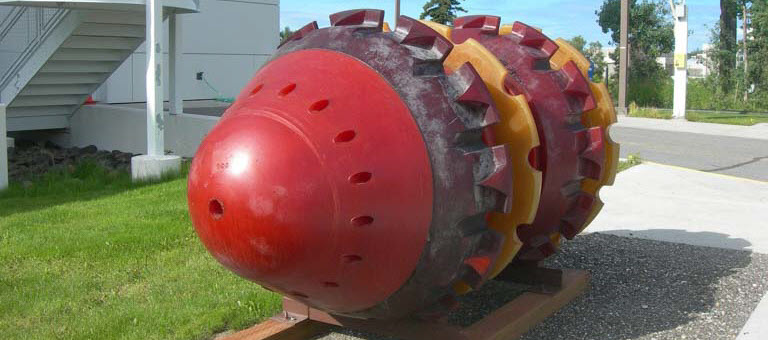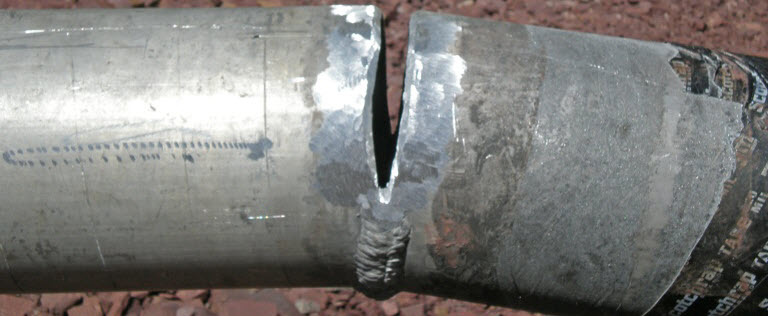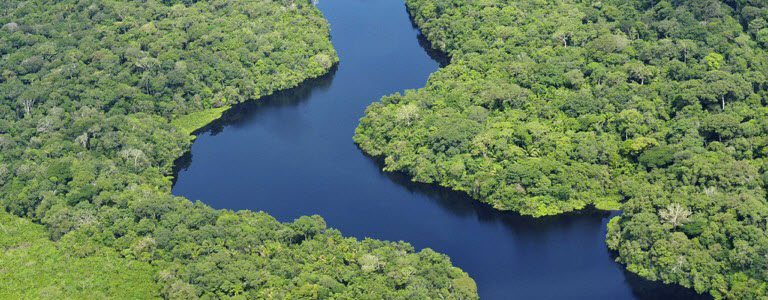PipeWay Engenharia, Brazil
Wherever you might be, there is a good chance that a vital aspect of your community is working smoothly and unnoticed right under your feet. This subterranean world houses the water and sewer lines, telephone cables, electric lines, and Internet connections that keep many communities of the world running smoothly and can play an important role in economic development.
To keep this operating requires energy, much of which comes in the form of oil, natural gases, propane, petroleum, and other raw materials. Pipelines are an efficient, cost-effective means of transporting these materials across fields, mountains, deserts, oceans, and international borders.

It is estimated that the worldwide length of all pipelines is around 4 million kilometers (km), and as economic development increases so does the demand for more pipelines. In 2013 over 24,000 km of new pipeline was installed, with plans for the construction of over 145,000 km more by 2018. With so many pipelines, ensuring that they are safe is an exceedingly important undertaking.
Worldwide there are fewer than 50 entities capable of carrying out inspections and servicing pipelines to prevent leaks, corrosion, and ensure safety. One of these is PipeWay Engenharia (PipeWay), a small and medium-sized enterprise (SME) from the Federative Republic of Brazil (Brazil) that manufactures products to inspect and maintain pipelines.
Partnerships
PipeWay was the result of a partnership that was formed in 1986 between the Centro de Pesquisas Leopoldo Américo Miguez de Mello (CENPES), the research center of Petróleo Brasileiro S.A. (Petrobras), a multinational energy company that is the largest in South America, and the Centro de Estudos em Telecomunicações (CETUC) of the Catholic University of Rio de Janeiro (PUC-Rio).
After developing in-line inspection (ILI) technologies for pipelines, CENPES approached CETUC to see if they could partner together and build upon CENPES’ in-house developed technology to develop a new device that would improve the cleaning, inspection, and maintenance of the tens of thousands of kilometers of pipeline that runs throughout Brazil. In particular, traditional equipment could miss certain areas when inspecting and cleaning a pipeline, thus reducing efficiency and causing possible safety risks.
Securing a small office at the Genesis Technology Incubator of PUC-Rio, engineers from CENPES and CETUC agreed to a partnership with the aim of developing a new technology capable of inspecting, cleaning, and repairing pipelines using electromagnetic sensors and devices.
Research and development
When a section of pipeline needs to be repaired, inspected, or serviced, a device called a “pig” is used. Named after the sound the first devices made – like the squeal of a pig (the animal) – as they traveled through early pipelines over a century ago, pig devices fall into two categories: utility and ILI. Utility pigs clean, separate, or remove water from a pipeline, while ILI pigs provide information on the condition of the pipeline as well as the extent and location of any problems. Since their development, “pipeline pigging” refers to using such devices in pipelines, and pigs or “pigging products” refer to the devices themselves and any required accessories.

One of the most commonly used ILI methods is magnetic flux leakage (MFL), which uses powerful magnets to magnetize (induce a magnetic flux) the pipeline wall. Sensors on the ILI detect problems in the pipeline wall – such as corrosion or missing pieces of the wall – through “leaks” in the magnetic field. For example, a section of a pipeline could be recessed due to corrosion, which the ILI magnetic field would enter, or “leak” into. Data about the leak is relayed to external equipment, which maps the exact location of the problem.
Despite their effectiveness, MFL based ILI equipment has limitations on detecting all suspect areas and the real size of these areas due to differences in pipeline characteristics and wall thickness. There are therefore instances when MFL based ILI pigs do not relay an accurate map of the pipeline wall.
In such a case, areas of the pipeline wall that need attention could be missed, which could result in environmental damage due to leaked material. Moreover, if an inaccurate reading of a pipeline wall were obtained using MFL-based pigs, additional time, equipment, and potential downtime of the pipeline would be necessary to secure the appropriate data. As a result, the company operating the pipeline could incur further costs, and end consumers could also be affected due to a delay or reduction in the delivery of materials such as fuel or natural gas. To solve these problems, CENPES and CETUC embarked on the research and development (R&D) of new pig equipment that would be efficient and cost-effective.
The two organizations’ earliest R&D success, which was patented and led to further innovations, was a new device that can be attached to a specific MFL ILI or be used after it. Called the Porcupine due to its appearance, it makes up for any deficiencies in MFL ILI equipment accuracy. This was followed up with the development of an enhanced MFL ILI that uses rare earth neodymium iron boron magnets to power the magnetizer. Doing so provides the strongest type of magnet available in an MFL ILI, and has a high degree of accuracy in the detection of pipeline thickness and leak sizes.
Many pipelines, however, cannot accommodate a pig device, such as those used in chemical plants, certain refineries, and those at piers. Because the inside of these pipelines cannot be inspected, they are at increased risk of forming leaks. To solve this, PipeWay developed an external inspection tool based on MFL technology. Called a Geometric Inspection Pig (GIP), it is a cost-effective solution for that can precisely locate internal or mid-wall defects detectable by ILI tools but without removing sections of pipe. A related innovation is the Caliper, which travels through a pipeline to inspect its geometry, locate deformations, and assess its overall integrity.
Invention
The Porcupine was the first major invention resulting from the partnership between CENPES and CETUC, and it led to the formation of PipeWay as a company in 1998. The device uses magnetic based displacement sensors to measure wall position with respect to the center of the device, which accurately records both loss of material in the pipeline wall and deposits within the pipeline such as wax. These sensors, which protrude from the center of the device looking like a porcupine, are individually calibrated and have a high level of sensitivity, detecting even minute changes throughout a pipeline wall. Furthermore, the Porcupine uses sophisticated algorithms to compensate for any wall thickness variations, thus providing high-resolution defect detection and sizing of minor and major changes. In addition, the device can operate with the same level of sensitivity in liquid or gas pipelines and can be attached to MFL ILI devices made by PipeWay or other companies.

Patents
Recognizing the importance of their invention, researchers at CENPES and CETUC, led by Mr. Jose Augusto Pereira da Silva, decided that utilization of the intellectual property (IP) system was essential for the future use of the technology. Shortly after the Porcupine was developed, the research partners therefore patented it with the National Institute of Industrial Property of the Ministry of Development, Industry and Foreign Trade of Brazil. The patent allowed CENPES and CETUC to form a scheme through with which the technology was licensed to PipeWay for commercialization and development of new products and services. With an eye on international expansion, the company has also secured patents in other countries such as the United States of America (USA). With patents in hand, PipeWay has been able to secure its technology and business strategies for domestic and international growth.
Technology transfer & trade secrets
Following the formation of PipeWay, technology transfer has allowed the SME to rapidly progress and become the leading company in South America to supply pig equipment and services. Petrobras, CENPES, CETUC, and PUC-Rio were the owners of the patents and trade secrets that made the Porcupine innovation possible. In order to facilitate commercialization, Petrobras transferred the technology and trade secrets required to develop the Caliper and MFL pig equipment to the original CENPES/CETUC R&D team (and subsequently PipeWay, after the company’s formation), which they used to innovate the Porcupine and pipeline scanning technology. In turn, PipeWay pays royalties to Petrobras and PUC-Rio for the use of the patents for this technology, allowing the SME to continue to develop and commercialize products.
Commercialization
With over 20,000 km of pipeline in Brazil, there is strong demand in the country for pigging equipment and related services. Soon after its formation, PipeWay commercialized its equipment domestically, securing the SME’s first contract with Petrobras in 1999 to use its MFL ILI and Porcupine products to inspect the gas pipeline between the cities of Paulinia and Porto Alegre. This initial contract was successful and word soon spread in Brazil of a cost-effective domestic alternative to more costly international companies. By 2014, PipeWay commercialized four major products: MFL ILI equipment, the Porcupine, its GIP device for external inspection, and its Caliper device for geometric inspection. In addition to the main equipment, the company offers accessories that are needed or serve to enhance pipeline inspection and cleaning.
As a companion to the SME’s products, PipeWay also commercializes PipeScan data management software that allows delivery, manipulation, and interpretation of data. The company also offers its clients standard or customized reports on this data, visually and accurately showing any anomalies found in the inspected pipelines. In an effort to differentiate, the SME also offers additional products and services such as coatings and insulation for pipelines. Successful product differentiation has allowed the company to work with its clients and develop specialized products and services for their unique needs both domestically and internationally.
Environment
The development of the MFL ILI and Porcupine devices bring with it significant environmental advantages. While pipelines play an important role in economic development and the daily lives of a large portion of the worldwide population, if they are not effectively maintained they can harm the environment. A leak that goes unnoticed can damage fragile ecosystems such as rainforests, deserts, and the world’s rivers, seas, and oceans. Pipeline leaks in population areas could also pose a health hazard, in case the leak spreads to the water supply or contaminates food resources. By developing and commercializing locally available, cost-effective equipment that ensures accurate inspection and maintenance of pipelines, PipeWay technology can serve to make the environment safer and cleaner for all those that rely on it for survival.

Business results
Only a few short years following the development of the Porcupine and other pigging equipment, PipeWay became one of Brazil’s most well known SMEs in the industry. Between 1999 and 2007, the company used its products and services to complete 270 inspections in over 15,000 km of pipelines. This success quickly turned the company into the largest supplier of pigging equipment and services in the region, and by 2010 had expanded to other South American markets such as the Chile, Argentina, Mexico, and Uruguay, and also North American markets such as the USA. Furthermore, the company is an award winner, with Mr. Pereira da Silva, PipeWay’s CEO, winning the Enrst & Young Entrepreneur of the Year Award in 2003. Since the company’s founding, it has enjoyed an increase in clients by over 260% and employs nearly 100 people.
Piping into innovation
Serving as a stream of life for communities large and small, pipelines go largely unnoticed but are vital for economic development and prosperity. Traveling across oceans, forests, deserts, and cities, maintenance of these pipelines is essential for the well being of the Earth’s environment and the plants, animals, and people that inhabit it. By developing and commercializing a unique invention through technology transfer and protecting it with the IP system, PipeWay has not only become a successful SME, but it has also ensured that communities continue to develop thanks to stable access to energy and thousands of kilometers of pipelines that remain safe and continue to go largely unnoticed.
Source: WIPO

 Client Focus
Client Focus